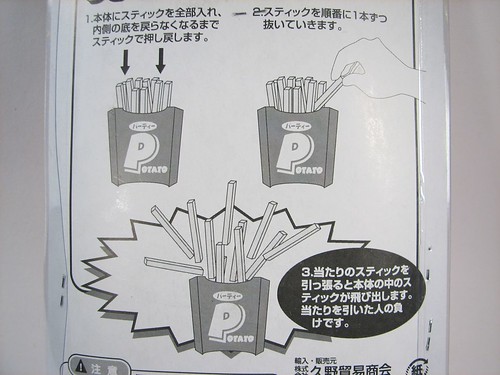Tweets the Phoenix Mars Lander:
Are you ready to celebrate? Well, get ready: We have ICE!!!!! Yes, ICE, *WATER ICE* on Mars! w00t!!! Best day ever!!
[via twitter, of course: link]




Tweets the Phoenix Mars Lander:
Are you ready to celebrate? Well, get ready: We have ICE!!!!! Yes, ICE, *WATER ICE* on Mars! w00t!!! Best day ever!!
[via twitter, of course: link]
Often times when people get started in electronics, they want to blink LEDs. This is this a great idea, and we really like blinking LEDs, so we’re happy to help. In the last year or two there’s also a growing chorus of people that want to drive high powered LEDs. That’s not always as easy, but it can be done.
Now by the time that you start talking about blinking the high power LEDs– you shouldn’t be surprised if people start whipping out the heavy artillery: 555 timer chips, transistors, boost converters, microcontrollers, solid state relays, and/or dedicated LED driver chips. While each of those does have its place, sometimes it’s nice to have a simpler and much less expensive alternative.
Here we describe what is possibly the simplest and cheapest circuit for driving and blinking high-power LEDs. The secret ingredient? Our good old friend the blinking incandescent light bulb.
We stopped by Japantown in San Francisco the other day and picked up an absolutely hilarious toy in the Japanese dollar store. Drawing straws meets the game Perfection in the “Party Potato”. Each person pulls a french fry out of the container. When the right french fry is pulled out, the spring is released and the french fries fly.
You don’t have to be able to read Japanese to understand these fabulous instructions. Two of the french fries are attached to strings which trigger the spring. It is awesome to see the plastic fly!
Even if you’re not a home brewer dealing with the hops shortage, hop plants are great to have in your garden. The trick is that they like to grow vertically up twine, so you have to rig a trellis. You can make one using scraps of soaker hose and antenna wire while taking advantage of tree trunks already in your garden.
On the bench today: an HP Color LaserJet 2600n, a modern compact color laser printer.
This printer is a curious beast. To an end user, how it works is pretty straightforward– you plug in an ethernet or USB cable and install the driver. But it’s really a technological marvel– a remarkably compact and precise “black box” that wields lasers, high voltage, motors, heaters, sensors, gears, and esoteric electromagnetic properties of specially formulated powders to produce photorealistic images on a sheet of paper.
From an economic perspective, it’s even more of a mystery. Brand new printers like this one are often on sale for about $300, complete with a set of full toner cartridges. You can also buy a set of replacement toner cartridges for it, for about $330. Thus from a crude economic perspective (that is, ignoring the extreme environmental irresponsibility of the remainder of this thought) it could possibly make more sense to just go ahead and buy a new printer when you run out of ink. Certainly, loss-leader printers have been the standard for some time in low end inkjets– is that what’s going on here, only at a higher scale? Maybe, but it’s not an open-and-shut case: the initial set of toner cartridges will last for years for infrequent home users, so it’s hard to imagine that HP would make money on every sale if they had to rely on many cartridges to be sold for every printer.
The printer on the bench today has served us well, but its time has finally come. In taking it apart, we’ll take a look at the design and see what interesting components are inside that might be reusable for other projects. (Hint: lots.) We’ll also see some of the very interesting guts in much more detail than your average teardown. We set out to make a photo essay of this, but at well over 200 photos (exchanged at the standard rate) this actually turns out to be less of an essay than an epic novel.
Continue reading Epic take-apart: HP Color LaserJet 2600n
The Great Internet Migratory Box Of Electronics Junk now has its very own wiki web site :
http://tgimboej.org/.
We’ve just made a nice update to the Peggy2 Arduino software, complete with new functions, new example programs, and fewer bugs. If you’re using Peggy 2.0 (or are thinking about it) you might want to go take a look.

Bonsai rose: a new use for wire-wrap sockets.
Continue reading Floral Arrangements for Engineers
We recently had occasion to order a lot of toothbrushes, and received a catalog with our shipment from Practicon Dental. There are few things better than a catalog specific to a particular industry. There are so many items that can be applied to various projects having nothing to do with teeth. I’ve never noticed a small vacuum former in a catalog before. There are compartmentalized storage boxes have plenty of utility beyond storing dental impressions. Diamond wire (listed as diamond floss) could be very useful to have around for filing in tight places. Another interesting tool I hadn’t seen before was a small sandblaster.
 If you know someone who need to be scared into proper dental hygiene, you can get gross-out posters of what happens when you don’t take care of your teeth. Speaking of scary, for your next ultra-creepy halloween costume, there are “Marvy Masque Cone Face Masks,” which are sure to frighten: especially the clown version. I’m not so sure they will “increase smiles, decrease anxiety” as claimed.
If you know someone who need to be scared into proper dental hygiene, you can get gross-out posters of what happens when you don’t take care of your teeth. Speaking of scary, for your next ultra-creepy halloween costume, there are “Marvy Masque Cone Face Masks,” which are sure to frighten: especially the clown version. I’m not so sure they will “increase smiles, decrease anxiety” as claimed.
On the less useful, but more interesting front, there is information on dosimetry services so you can track your x-ray exposure. You can order business card dental floss packets. I’m thinking that “tidy tube winders” would make a great give-away for people with as many half-used tubes of glue as we have. But one of my favorite items were these adhesive-tip applicators, which “help you securely hold and place fragile or small” things. Those definitely fall on the useful side. I’m not sure what for yet, but I’ll think of something.
Clearly there are many tools and supplies in the Practicon catalog that are applicable to a much wider audience than just dental practices. We may have to order from them again, and not just for bristlebots!